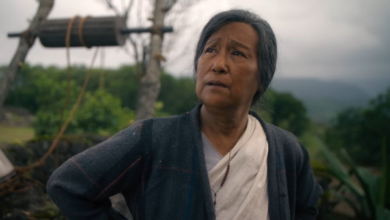Assamese romanticism & need for scientific literature

 Romanticism in Assamese literature is a completely new concept or creation even for Indians. It is imported from the West, especially the United Kingdom. There were many readers of Kalidas’ Abhignan Shakuntalam or Meghdoot in Assam. Likewise, lovelorn songs of Sankardev’s Keligopal or Parijat Horon are not characterised as such part of romantic literature. These literatures are a mix of spirituality with a purpose to establish the supremacy of God.
Romanticism in Assamese literature is a completely new concept or creation even for Indians. It is imported from the West, especially the United Kingdom. There were many readers of Kalidas’ Abhignan Shakuntalam or Meghdoot in Assam. Likewise, lovelorn songs of Sankardev’s Keligopal or Parijat Horon are not characterised as such part of romantic literature. These literatures are a mix of spirituality with a purpose to establish the supremacy of God.
Romantic literature in England flourished in the early nineteenth century through poets like PB Shelly, William Wordsworth, Samuel Coleridge etc. But this is basically a revival of romanticism because the romantic period in English literature started with the creations of William Shakespeare. The first quarter of the nineteenth century was the dawn of Assamese literature.
Start of Modern Literature
The Assamese language resurfaced after 36 years of hiatus. It was the efforts of Orunodoi (Sunrise) and Jonaki (Moonlight). Both the magazines were two hands of the Assamese literary empire. The first one established the throne and the second fortified the kingdom.
Orunodoi was published in 1846 by Baptist Christian Missionaries and it lasted till 1883. Though the main motive of this magazine was to establish Christianity, but modern literary figures were a gift from this magazine. Among the authors were Gunabhi Baruah, Hemchandra Baruah and Anandaram Dhekial Phukan. But the modern fantasy of Assamese literature started with Jonaki.
Jonaki Period
Chandra Kumar Aggarwal (1867-1938), Lakshminath Bezbaruah (1864-1938) and Hemchandra Goswami (1872-1928) are said to be the Trinity (Trimurthy) of the Assamese Renaissance. The tempest of the new Assamese literary renaissance came to Assam via Bengal in 1826. Being situated geographically and politically in a remote area, Assam got connected with outsiders after the fall of the Ahom dynasty through the Yandaboo pact.
The publication of Jonaki in 1889 was the birth of the golden literary period of Assam. Asomiya Bhasha Unnati Xadhini Sabha, a literary organisation of the then Calcutta-based Assamese, sponsored Jonaki. Noted promising romantic litterateur Chandra Kumar Aggarwal was its secretary. Aggarwal was the master of the theme on which emotive responses and feelings of romanticism were based.
Literary Assamese romanticism is a flowing river. Charioteer of Assamese literature Lakshminath Bezbaruah was himself a boat crisscrossing all paths. Aggarwal and Hemchandra Goswami obviously handled the oars. Aggarwal’s poems of unbounded emotions like Bankuwari (jungle nymph), Niyar (dew drop), Sundar (Beautiful) and Prakriti (Nature) echo the poetry of Keats. Somewhere he enlivened nature.
Bezbaruah was a literary genius. From poetry (Kadam Kali) in 1913, short stories (Jonbiri, Surabhi) in1909/1913 to historical dramas Joymati Kunwari, Chakradhwaj Singha, he sprinkled golden water everywhere. Goswami was the first to compose the Assamese sonnet, Priyatomor Chithi, (letter of beloved).
The regressive and antagonistic attitude of Bengali people towards Assamese literature and language catalysed the literary nationalism among the Assamese diaspora. Not only Assamese, but all modern regional literature of India is the prototype of Europe.
Romantic Trend
Sankari or post-Sankari literature is more about divinity. The religio-ethical mood was a prevalent method of writing. Setting aside typical Assamese ideals tried to emancipate the fantasy of thoughts. Assamese literature in general had homogeneity and commingling of the same tendencies. With the advent of Western literature, there was a conflict between the flying and restraint literary systems. The achievements of Assamese literature materialised when feelings and thoughts became susceptible to poetic impulses. Natural and expressive freedom of lyrics is an important trait of romantic literature.
Revolutionary write-ups can emancipate literature from the old grip. This is a kind of literary freedom struggle symbolically to establish romanticism. Except for a few prominent litterateurs, many in Assam had not cooperated with the inevitable change of the new literary stream. The Assamese elites were unable to penetrate commoners for various reasons. Erstwhile Calcutta being the hub of Assamese romanticism may be one reason for not touching the remote hinterland of Assam.
It is not true that we do not have any traditional base or ingredients for romantic literature. Traditional popular song Bongeet (jungle song) is one of the oldest Assamese songs prevalent among rural youngsters, farmers and woodcutters. It is said the origin of ‘Bihu’ songs or tunes also changed the form of Bongeet. Deplorably our romantic literature could not sustain or inherit the legacy of most of the emotive longing lyrics for poetic expression. However, Assamese romanticism held sway over urbanised localities of Assam unlike Bengal or rustic Bongeet.
Poetry
Only poetry had opened the modern golden gate of Assamese literature. Human intellectual history is characteristically the same at all times. Like the birth of poetic aboriginal literature, poetry also successfully led the literary contingent to attain romanticism. The poetic stir was multifaceted. English poems were innovative and full of love, affection, emotions and sentiments. Affinity towards natural feelings and spontaneous outbursts without rigid authoritarian rule cater to the growth of poetry.
Contemporary socio-political events had a vital influence on the writings of Shelley, Byron etc. There were a few writers in that period who were directly or indirectly inspired or moved by the French Revolution. On the other hand, political consciousness and national upheavals had very little impact on our poets. The rhythmic words of Chandra Kumar Aggarwal had an open-heart ebullience in Bin Boragi.
Post-Jonaki Period
Agni kobi (fiery poet) Kamala Kanta Bhattacharya to some extent revolutionised sarcastic writing on present socio-political issues. Some folk poetic lyrics or stories running verbally in Assamese traditional society had been reborn beautifully in new attire.
The artistic vision and imaginative power to transform insignificant objects into thoughts of modulation became rich insignia of poetry. Enthusiasts of this theory, such as Dayaram Chetiya and Bhairav Khataniar wrote Chapakhanar Bibaran and Manimuni Sak, respectively.
Apart from love and nature, the school of mysticism also grew in poetry. True mysticism was represented by Nalini Bala Devi (1898-1977). Another great spiritual mystic poet AG Rai Choudhary (1885-1967) applied sensible cognizance to saturate in mysticism in eternity. Renowned poet Jatin Duara (1892-1964) tested his poetic debut in Banhi magazine (1909-1933). He owed his feelings to Omar Khayyam, Tennyson, Tagore etc.
Last Part of Romanticism
The narrative of Assamese last period of romanticism will remain incomplete if the dramatic monologue of Deba Kanta Baruah is not discussed. He is a product of Aabahon magazine published in Kolkata in 1929. He boldly romanticised Assamese poetry and owed it to Virginia Wolf and Robert Browning. The modern or post-romanticism period began after that.
Western Indian Impact
Western sense is omnipresent. Be it the technique of presentation or the subject matter, all are like copy-cats of the West. The Assamese romantic literature is not separated from that of the Indian. Only the time of arrival is different. As mentioned earlier, besides having inherently amorous songs, Indian literature had not evolved or experienced any transition. Modern education made people aesthetic and literary connoisseurs.
Overall Romantic Literature
Notwithstanding poetry, the Assamese literary Trinity also forayed into other fields of literature. During the initial period of romanticism, Assamese readers got a glimpse of dramaturgy, novels, short stories, essays etc.
As long as drama is concerned, Shakespeare’s Comedy of Errors was famously translated as Bhrama Ranga in 1888. The translation was done by many under the guidance of LN Bezbaruah in Calcutta. This is the kind of literary rendering where characters and venue are of Assamese milieu, built path for indigenous creation.
Present and Future of Assamese Literature
Hobbies, tastes, interests and necessities are changing with time. Literature is also not exceptional. Small regional languages are under the threat of extinction. How do we preserve linguistic identity?
We have to search for an avenue for new literary themes where readers must have a natural appetite or compulsion to read. Scientific literature starting from geology to astronomy or from pisciculture to flora and fauna has to be a resourceful subject of creative literature now. Scientific evaluation is required to beautifully verify the quality of trees or planets and all other seen objects with added literary contents. Scientific literature will be of academic importance also for students and educationists.
Scientific literature and environmentalist Phatik Gogoi of Assam years ago wrote about ‘Indian wild animals’ in 1966. The same writer wrote about ‘cells of trees’. Recently, Girimallika Saikia published a book, Ananya Aranya. Here she precisely presented biodiversity conservation through various Assamese short stories and dramas. This stream of literature has to be flown in a more expanded way in all subjects of the universe. Finally, this is the scientific period of post-moonwalking. Decorated words of scientific reality matter for conscious readers.





